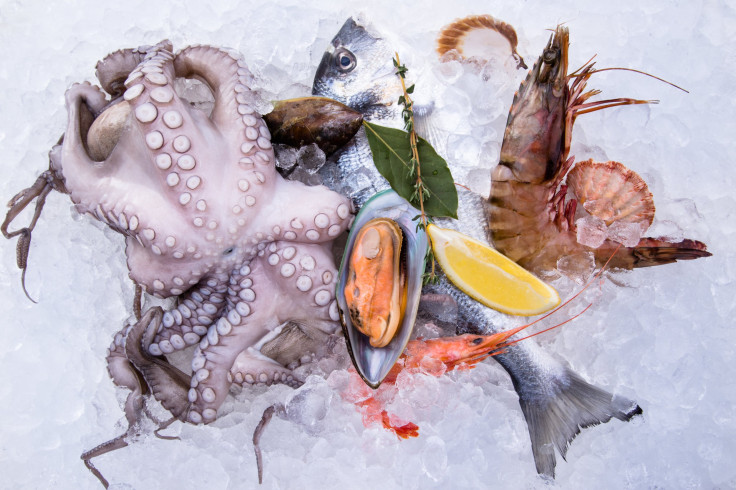Antibiotics In Your Fish: Researchers Find Traces Of Antimicrobials In Seafood, Posing Concern For Resistant Bacteria

It may not just be chicken or other types of meat that are filled with antibiotics. New research shows that fish might be antimicrobial culprits, too.
The authors of a new study examined shrimp, salmon, catfish, trout, tilapia, and swai from 11 different countries, and found traces of five antibiotics in the fish among the 47 antibiotics evaluated.
Antibiotic-resistant bacteria are a public health threat that could become worse in the coming years. According to the Infectious Diseases Society of America, these resistant bacteria sicken two million people in the U.S. and kill up to 23,000. Recently, President Barack Obama proposed several steps that the government would take to address the problem — but research still lacks when it comes to seafood.
“The threat of living in a post-antibiotic era cannot be avoided without revising current practices in the use of antibiotics in animal husbandry, including in aquaculture,” Rolf Halden, an author of the study and a researcher at Arizona State University, said in the press release.
The researchers set to better understand to what extent antibiotics might be present in seafood, and published their work in the Journal of Hazardous Materials. Since aquaculture, also known as aquafarming, has seen dramatic growth in recent years — more people demand fish, and thus fish farmers have to increase their supply — the use of antibiotics in seafood has increased. Antibiotics help to prevent and treat pathogens that infect fish, but the downside of antibiotics in food is well-known at this point: They can build immunity in bacteria, rendering many medications ineffective if someone has an infection.
“The overuse of antibiotics, whether for human ingestion in hospitals or for agricultural or aquacultural use, can seriously exacerbate this problem, enriching microbes that bear particular genetic mutations, rendering them antibiotic resistant,” the press release states. “In a biological arms race, antibiotics applied to combat disease run the risk of producing multi-drug resistant organisms that are increasingly difficult to kill.”
The authors examined 27 different seafood samples, including five of the top 10 most consumed seafoods in the U.S.: shrimp, tilapia, catfish, swai, and Atlantic salmon. They discovered the presence of five antibiotics, including oxytetracycline in wild shrimp, farmed tilapia, farmed salmon and farmed trout; 4-epioxytetracycline in salmon; sulfadimethoxine in shrimp; ormetoprim in salmon, and virginiamycin in salmon that had been marketed as antibiotic-free.
While all of the amounts of antibiotics found in the fish complied with FDA regulations, the authors argue that even these relatively low levels can cause damage in the long-term by promoting resistance development. “Proper monitoring of antibiotic residues in seafood is particularly critical, due to the fact that many antibiotics used in aquaculture are also used in human medicine, for example amoxicillin and ampicillin — common therapeutics for the treatment of bacterial infections, including pneumonia and gastroenteritis,” the press release notes.
Source: Done H, Halden R. Reconnaissance of 47 Antibiotics and Associated Microbial Risks in Seafood Sold in the United States. Journal of Hazardous Materials. 2014.



























